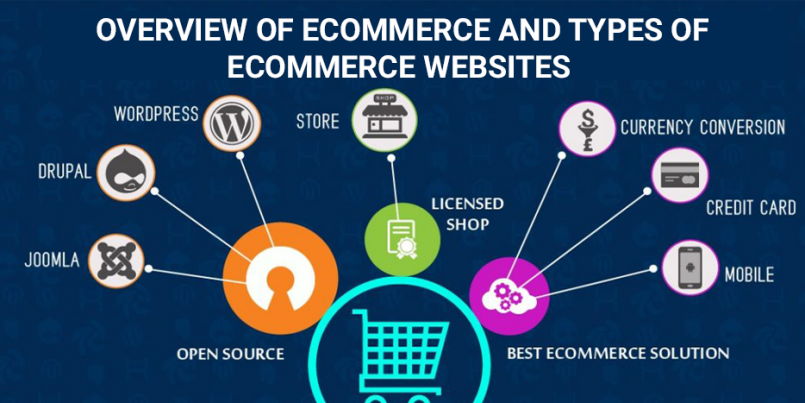- Have any questions?
- +91 7709508692
- sales@web5studio.com
Behind the Scenes of a Multi-Million Dollar Ecommerce Website Design

Mistakes to Avoid in the Software Development Process: Insider Secrets Revealed
September 5, 2023
Unlocking the Secrets of Top Content Writing Gurus
September 26, 2023Ecommerce website design service is one of the most influential revolutions in the 21st century, turning the world into a global marketplace. The intricate details, effort, and dedication that go into the creation of a top-tier ecommerce website design are immense. In this behind-the-scenes peek, we shine a light on the best ecommerce website design and development processes in Nagpur City.

1. Market Research & Consumer Behavior Analysis: Every project starts with a deep dive into the market. The design and development teams study the target audience, their online behavior, preferred shopping trends, and overall demographics. The goal? To create a website tailored to user preferences, thus increasing the likelihood of sales.
2. UI/UX Design: One of the most critical components of an ecommerce site is its user interface (UI) and user experience (UX). Companies in Nagpur prioritize crafting interfaces that are not just visually appealing, but also intuitive and user-friendly. The user journey is mapped, ensuring that each step from landing on the homepage to checking out is smooth.
3. Mobile Optimization: With the majority of users now shopping from their smartphones, having a mobile-optimized website is non-negotiable. Responsive designs ensure that the ecommerce platform provides a seamless experience, regardless of the device used.
4. Security Measures: With the increasing number of cyber threats, security is paramount. Top-tier ecommerce websites in Nagpur integrate SSL certificates, secure payment gateways, and regular security audits to protect both user data and business information.
5. Advanced Search & Filter Options: For users to find what they’re looking for quickly, an advanced search system is crucial. With the help of AI and machine learning, some websites even offer personalized product recommendations based on browsing history and preferences.
6. Integration of AR/VR: The future of online shopping lies in augmented reality (AR) and virtual reality (VR). Some Nagpur-based companies are already introducing AR functionalities, allowing users to virtually “try on” products or visualize them in their space before buying.
7. Real-time Analytics: Understanding how users interact with the site is essential for continuous improvement. Using tools like Google Analytics, ecommerce sites can monitor user behavior, identify bottlenecks, and implement strategies to optimize conversions.
8. Seamless Checkout Process: A long and complicated checkout process can lead to cart abandonment. The best ecommerce websites ensure that the process is as swift and hassle-free as possible, with options for guest checkout, saved user profiles, and multiple payment methods.
9. Testing & Feedback: Before launching, rigorous testing is conducted, spanning various devices, browsers, and user scenarios. This ensures that all potential glitches are ironed out. After the launch, feedback is actively sought and integrated into ongoing development efforts.

10. Scalability & Flexibility:
The digital realm is ever-evolving, and ecommerce platforms need to be ready to scale up as the business grows. The best sites are built on architectures that can handle surges in traffic and transactions, especially during peak sales periods. Moreover, the flexibility to incorporate new features, integrate third-party tools, or expand to new markets is crucial. This foresight ensures that the site remains robust and relevant as market dynamics change.
11. Personalization & AI:
Modern ecommerce sites are not static; they evolve according to user behavior. AI-driven algorithms analyze browsing patterns, purchase history, and even time spent on pages to offer personalized product recommendations. This personal touch not only enhances the user experience but also drives sales by presenting users with products that resonate with their preferences.
12. Multilingual & Multi-currency Support:
Considering the global nature of ecommerce, leading platforms in Nagpur are emphasizing inclusivity. This means offering multilingual support for a diverse user base and multi-currency options to facilitate international sales, breaking down geographical barriers.
13. Customer Support & Chatbots:
Exceptional customer service is often the differentiator between average and top-tier ecommerce platforms. Many Nagpur-based ecommerce websites integrate 24/7 chatbots that use AI to answer common queries. For more complex issues, they ensure human customer support representatives are available, further enhancing trust and user satisfaction.
14. Continuous Updates & Maintenance:
A one-time design and development aren’t enough. Continuous maintenance is required to ensure the platform runs smoothly, free from bugs and glitches. Updates are rolled out regularly, both to introduce new features and to stay in line with evolving technological standards.
15. Community & Social Integration:
The power of community and social validation cannot be understated. Many successful ecommerce platforms have integrated features that allow users to share their purchases on social media, write reviews, or even create wish lists that can be shared with friends and family. These integrations serve as organic marketing tools, driving more traffic and creating a sense of community among users.

16. Environment & Sustainability Initiatives:
In an era where environmental concerns are paramount, forward-thinking ecommerce sites are weaving sustainability into their core. This can be seen in the form of eco-friendly packaging, carbon-neutral shipping options, and promoting sustainable products. By offering eco-conscious choices, they not only attract a segment of environmentally aware consumers but also set a standard for responsible ecommerce operations.
17. Loyalty Programs & Engagement:
Loyalty isn’t just about repeat purchases. The best ecommerce platforms understand the value of building a relationship with their customers. Through loyalty programs, they incentivize not just buying but also activities like reviews, referrals, and social media shares. These programs often include points-based systems, exclusive discounts, and early access to sales, fostering a deeper brand-customer bond.
18. Advanced Payment Options:
Financial technology (fintech) has revolutionized how we pay for goods and services. Recognizing this, top ecommerce sites in Nagpur are integrating payment methods like cryptocurrency, digital wallets, and buy-now-pay-later options. Such diverse payment methods cater to a broader audience and ease the transaction process.
19. Virtual Showrooms & Interactive Content:
In a bid to bridge the gap between online shopping and the tangible retail experience, many ecommerce platforms are introducing virtual showrooms. Here, users can navigate a 3D space, interact with products, watch videos, and even attend virtual events or launches. This interactive approach offers a richer, more immersive shopping experience.
20. Collaborations & Brand Partnerships:
Strategic collaborations can elevate the offerings of an ecommerce platform. By partnering with influencers, renowned brands, or even celebrities, these sites can offer limited edition products, exclusive collections, and unique content. Such collaborations often create buzz and excitement, driving both traffic and sales.
21. Educational Content & Workshops:
Modern consumers value knowledge. Hence, top-tier ecommerce platforms are often complemented by blogs, video tutorials, and workshops related to their products. Whether it’s a skincare brand hosting webinars on beauty routines or a tech platform offering tutorials on gadget use, such value-added content positions the brand as a thought leader in its niche.
22. Feedback Loop & Community Building:
Engaging with users doesn’t end after a purchase. Successful ecommerce brands continuously seek feedback, whether through surveys, user testing, or community forums. This open channel of communication helps brands evolve according to their users’ needs and builds a sense of community and belonging among patrons.
Read More: Web Design Principles for Conversion Optimization
Conclusion:
The journey behind creating a multi-million dollar ecommerce website is intricate and layered. As we’ve delved deeper into the processes adopted by the best in Nagpur City, it becomes evident that the success of such platforms doesn’t come overnight. It is the culmination of rigorous research, meticulous planning, technological prowess, and a deep understanding of user behavior. These elements, combined with a commitment to excellence, propel Nagpur’s ecommerce industry to greater heights, setting benchmarks not just nationally but globally.



